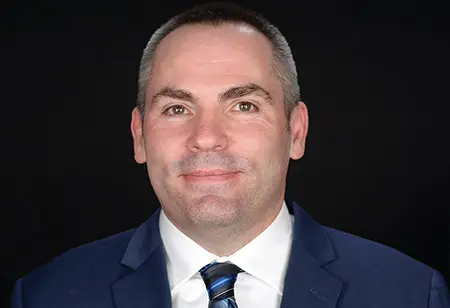Thank you for Subscribing to Healthcare Business Review Weekly Brief

How Hospice Careis Evolving: Managing End-of-Life Pain with Care, Collaboration and Compassion
Healthcare Business Review
Though death is inevitable, suffering is not. And while we each have our own deeply personal wishes for how we hope to spend our final days, the desire to minimize pain is nearly universal, even innate. Perhaps that’s why, according to the National Hospice and Palliative Care Organization’s most recent data, the number of hospice care patients continues to steadily rise, with 1.61 million Medicare beneficiaries enrolled in hospice as of 2019.
Simply put, the goal of hospice care is to improve quality of life at the end of life. At this stage, the focus of care shifts from disease-modifying treatments to supportive approaches with a focus on pain-symptom management. Our goal is to neither accelerate nor prolong the dying process, but rather, to consider every tool available to us so that we can provide physical, emotional and spiritual comfort to patients and their families.
Pharmacological Pain Management Strategies
Pain management is a nuanced and multidimensional therapeutic areathat requires a carefully balanced approach. In patients with advanced illness, there are a variety of pharmacological strategies that hospice care professionals will consider to help keep pain under control. These include topical agents like capsaicin and diclofenac gel; systemic agents such assalicylates and steroids; neurotransmitter analogues like gabapentin; antidepressants such as serotonin and norepinephrine reuptake inhibitors(SNRIs) and tricyclics;as well as opioids. Morphine is one opiate option alongside others including hydrocodone, oxycodone and hydromorphone.
Opioids like morphine play a vital role in end-of-life care. However, patients and their loved ones may worry about their side effects or even the development of substance use disorder. While these concerns are entirely understandable, it’s important for patients and their families to understand that the aim of morphine in advanced illness is only to provide relief and peace.
To help strip away the stigma from these cornerstone therapies of comfort-based care, it’s essential to address these common myths with empathetic and respectful education. At VITAS Healthcare, we explain that side effects usually subside after a few days or can be well-managed with a limited amount of additional medication. The concern about substance use disorder should always be taken seriously, but hospice benefits from frequent home visits and closer monitoring to help mitigate this risk. Also, we initiate opioids like morphine at the lowest dose possible so that people stay awake, alert and have adequate symptom and pain management.
New Tech Solutions for Pain Management
We also acknowledge that good pain management requires precise calculations and extremely thoughtful decision-making. That’s why VITAS developed an innovative and comprehensive opioid conversion tool tailored specifically for the treatment of medically complex patients with advanced illness, particularly people nearing the end of life.
Available for free on the VITAS mobile app, the conversion tool puts decisions about appropriate, effective pain control in clinicians’ hands within easy reach around the clock, helping them identify optimal opioid options, delivery methods and doses. The tool takes numerous factors into account, including the drug’s pharmacokinetics and pharmacodynamics, as well as a patient’s comorbidities, health status, functional status and clinical history.
Recommendations are generated based on best practices, clinical evidence, and VITAS’ decades of experience with the unique needs of the hospice patient population.With the conversion tool, healthcare professionals can feel confident in prescribing pain medication more effectively and safely.
The digital era has also enhanced end-of-life care accessibility, since the continuum of care is no longer confined to the four walls of a healthcare facility. Remote clinician visits allow patients to receive frequent check-ins without having to leave the comfort of their own homes, and nurses are better able to record patients’ symptoms in real-time thanks to mobile devices, virtually eliminating any disconnect between data collection and care planning.
NoN-Pharmacological Approaches to Pain Management
End-of-life care undoubtedly extends beyond pharmacological solutions. It must involve an integrated, interdisciplinary team – physicians, nurses, hospice aids, bereavement specialists, social workers, chaplains, volunteers and even creative cross-sector partners – to provide holistic care that addresses each patient’s physical, spiritual, psychological and social needs. For example, VITAS partnered with telecommunications leader AT&T to explore the effectiveness of 5G-enabled virtual reality as a way to improve quality of life among hospice patients. The study results revealed that the technology eased anxiety and loneliness and decreased pain and other disease-related symptoms.
Pain Management is a Nuanced and Multidimensional Therapeutic Areathat Requires a Carefully Balanced Approach
Other integral aspects of hospice care services include massage, reiki, transcutaneous electrical nerve stimulation, thermal modalities, acupuncture and aromatherapy. Music therapy and pet visits can also provide distraction, relaxation and the comfort of emotional connection, while spiritual care such as pastoral services can provide relief from emotional and spiritual distress and help reduce pain.
Not every service or treatment option is right for every patient, of course.Ultimately, the most important thing a clinician can do to ensure a patient’s end-of-life care is as supportive as possible is to maintain clear and compassionate communication with the patient, their family and their healthcare team. Too often, patients approach their final days without having candid conversations about their values and preferences. Having these discussions sooner rather than later, and always with openness and respect, can help both the patient and their loved ones take comfort in knowing their end-of-life wishes are well understood.
Joseph Shega, MD, is the executive vice president and chief medical officer for VITAS® Healthcare, the nation’s leading provider of hospice care.









